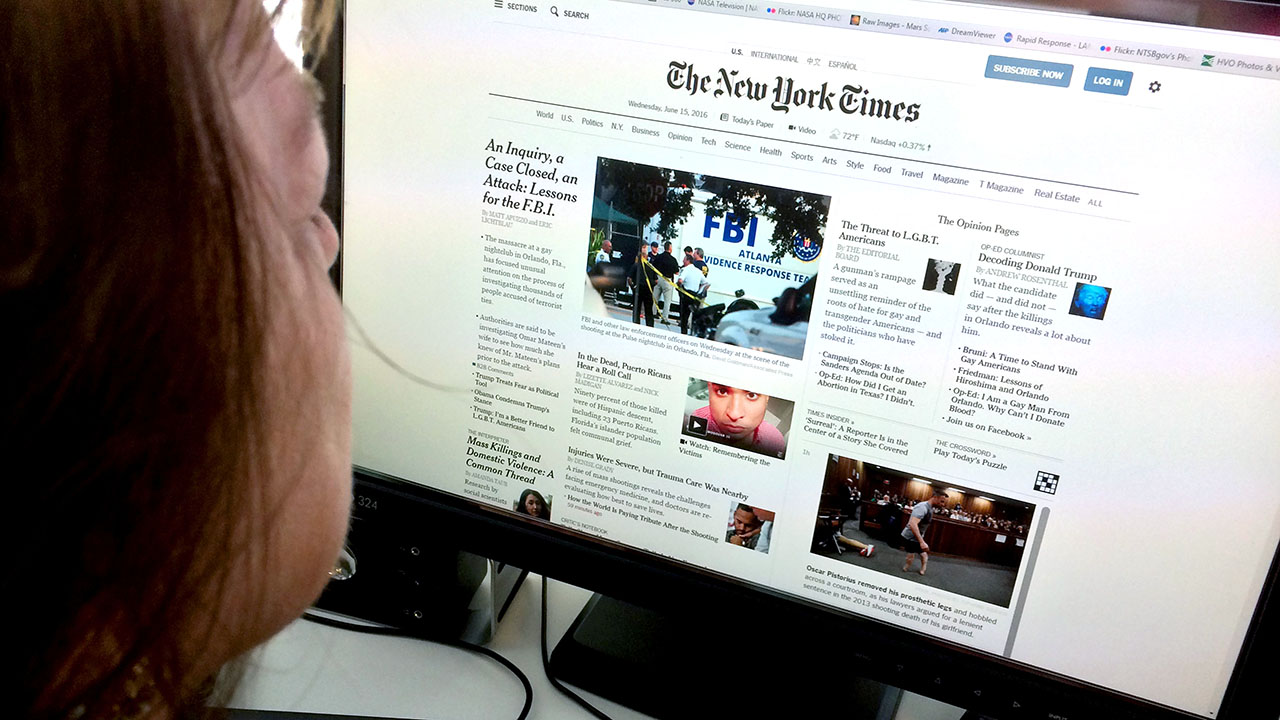Not known Factual Statements About News Channels
Some Of News Channels
Table of ContentsGet This Report on News ChannelsRumored Buzz on News ChannelsExcitement About News ChannelsThe smart Trick of News Channels That Nobody is Discussing
Rolling information channels transmitted information material 24 hours a day. The introduction of the internet has actually permitted the routine 24-hour-a-day presentation of many video and audio information records, which are updated when extra information ends up being available; numerous television broadcasters offer content originally provided on-air as well as exclusive or additional information material on their web sites.Stations that use a "wheel" format often tend to maintain to a set timetable of particular shows at certain details minutes on the hour, and among these segments is regularly a news. These short notices will offer summaries of any type of damaging information of rate of interest, and may consist of neighborhood worries such as weather prediction or web traffic records.

Information programs in the United States were at first transmitted over the radio. NBC began broadcasts in November 1926, with CBS entering production on September 25, 1927. Both at first reviewed comparable subjects, such as political election results, governmental inaugurations, and other matters of problem to the general public. However, NBC soon emerged as the dominant force for home entertainment talent.
What Does News Channels Mean?
A basic shift gradually occurred in the design of the evening newscasts in many nations. In the 1950s, television was unique sufficient that it was thought about entertainment. In the 1960s and 70s, tv newscasts tended to be abnormally "severe" by later on criteria, featuring more "difficult news" and less light home entertainment mixed in.

From 2000 to 2010, overall viewership of transmission information proceeded to decline. Some news-adjacent cord programs acquired fame and success in this age (such as the comedy-focused Read Full Article and the commentary-focused ). Nevertheless, their gains did not counter the continuing steep decrease in viewership of mainline network information. This period saw diversity and fragmentation continue even additionally as new niche networks got importance such as the business-focused CNBC, Bloomberg Television, and Fox Business.
All about News Channels
newscasts on other terminals. The National, which has broadcast on CBC Tv given that 1954, is the longest-running national network broadcast in Canada. More hints All 3 networks also produce regular newsmagazines: CBC's (aired considering that 1975), Global's (broadcast considering that 2008), and CTV's (broadcast because 1966 and presently the longest-running network newsmagazine in Canada). [] CTV's is the sole nationwide morning news program on program television in Canada, and replaced, which broadcast considering that 1975.
Neighborhood TV stations in the USA typically transmitted local news 3 to four times a day generally: generally airing at 4:30, 5:00, 5:30, or 6:00 a.m (News Channels).; midday; 5:00 and 6:00 p.m. in the very early evening; and 10:00 or 11:00 p.m. Some stations bring early morning newscasts at 4:00, 7:00, 8:00, or 9:00 a.m., lunchtime broadcasts at 11:00 or 11:30 a.m., late afternoon broadcasts at 4:00 or 4:30 p.m., or very early evening broadcasts at 5:00 or 6:00 p.m
in the Eastern and Pacific time areas or 9:00 p.m. in the Hill and Central time zones in the united state). Terminals that produce regional broadcasts commonly transmit as little as one to as much over twelve hours of local information on weekdays and as little as one hour to as high as 7 hours on weekend breaks; news programming on weekend breaks are generally restricted to early morning and night newscasts as the variable organizing of network sporting activities programs (if a station is affiliated with a connect with a sporting activities division) typically stops most stations from carrying noontime broadcasts (however a couple of stations situated in the Eastern and Pacific time areas do produce weekend break midday newscasts). [] From the 1940s to the 1960s, broadcast tv terminals commonly offered local news programs just one to 2 times each evening for 15 minutes (the normal length for many in your area created programs at the time); typically these programs broadcast as supplements to network-supplied night information programs or leadouts for primetime programs.
The Best Strategy To Use For News Channels
In situations where a terminal with an existing news department gets in right into an information share arrangement, it will result either the two divisions combining or the straight-out conversion of newscast manufacturing from in-house to outsourced production.
The Big Three my review here broadcast tv networks produce morning and evening national broadcasts.